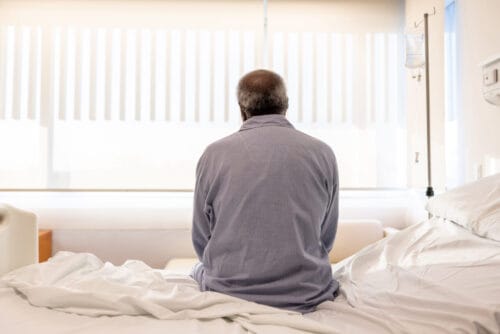Tackling Racial Bias in Health Care Key Factor in Determining COVID-19 Outcomes
June 23, 2022
Fly View Productions, Getty Images
Recent study validates predictive models for COVID-19 outcomes that incorporate social determinants of health.
The Bottom Line
COVID-19 severity may be accurately predicted using a score based on a large, diverse patient population that accounts for the dynamic evolution of vital signs, potentially aiding in triage, resource allocation, and staffing determinations. Additionally, race, social determinants of health (SDOH) and hospital occupancy play an important role in predictive risk related to COVID-19.
Context
Since early 2020, COVID-19 has affected millions of people worldwide. Despite overall vaccination rates of about 68% in the United States, lower vaccination rates in some populations, and the emergence of new variants suggests that COVID-19 will continue to affect health systems for some time.
Making predictions about COVID-19 severity is important for clinical triage, resource allocation, staffing, and overall planning, not only within hospital systems, but across communities and states. Prior to this study, no predictive models of hospitalization, disease severity, and mortality had been developed using data from a safety-net hospital caring for a large percentage of racially and ethnically diverse patients, including many lower-income individuals with needs associated with SDOH. In addition, no models have leveraged SDOH for patients receiving clinical care.
Boston Medical Center (BMC) was well-positioned to do this research, with robust patient-reported data on race, ethnicity and SDOH needs.
Study Objective
To develop predictive models of COVID-19 outcomes, elucidate the influence of socioeconomic factors, and assess algorithmic racial fairness using a racially diverse patient population with high social needs.
The Details
Researchers at BMC and Boston University de-identified data for all 7,102 patients with a positive SARS-CoV-2 test at BMC between January 1 and December 31, 2020. Data included demographics, SDOH variables, depression status, travel-contact information, vital signs, radiological findings, past medical history, symptoms, medications, laboratory tests, hospital occupancy, hospitalization course, admission to the intensive care unit (ICU), mechanical ventilation, and mortality. SDOH variables were based on answers to the THRIVE survey administered at BMC, which identifies social needs in eight domains: housing, food, medication, transportation, utilities, childcare, employment, and education.
Researchers developed predictive models for hospitalization, ICU care, mechanical ventilation, and mortality. A profile was built for each patient including all outcome labels and extracted features for each patient.
Findings
Among 7,102 patients, 19.5% were admitted. Among the hospitalized, 23.3% required ICU care, 13.8% received mechanical ventilation, and 9.65% died. The mean age of all patients was 48, of which 35% were Black.
The study found that hospitalizations can be predicted with an area under the receiver-operating characteristic curve (AUC) of 92% using symptoms, hospital occupancy, and patient characteristics, including SDOH. Parsimonious models to predict intensive care, mechanical ventilation, and mortality that used the most recent labs and vitals exhibited AUCs of 92.7%, 91.2%, and 94%, respectively. Early predictive models, using labs and vital signs closer to admission had AUCs of 81.1%, 84.9%, and 92%, respectively.
Early dynamic basic biometrics like vital signs are predictive of risk related to COVID-19, as are SDOH factors. Understanding SDOH needs and addressing them as a society is crucial to closing health outcome gaps. Black patients were more likely to be falsely predicted to need hospitalization whereas white patients were more likely to be falsely predictd to not need hospitalization. This means that prediction models can perpetuate social biases about race and other social factors, as such we must adjust for those biases.
Pull Quote
“When we can address racial bias in standards of care, through the use of predictive models, we remove the impact that bias can have on outcomes. SDOH continue to be a critical determinant of health outcomes even for acute disease like COVID-19.”
Hao B, Hu Y, Sotudian S, Zad Z, Adams WG, Assoumou SA, Hsu H, Mishuris RG, Paschalidis IC (2022). “Development and validation of predictive models for COVID-19 outcomes in a safety-net hospital population.” Journal of the American Medical Informatics Association.
Share on Social
Subscribe to HealthCity’s Newsletter
HealthCity elevates the conversation around issues of equity in healthcare. | Sent biweekly.
© 2025 HealthCity. All rights reserved.


